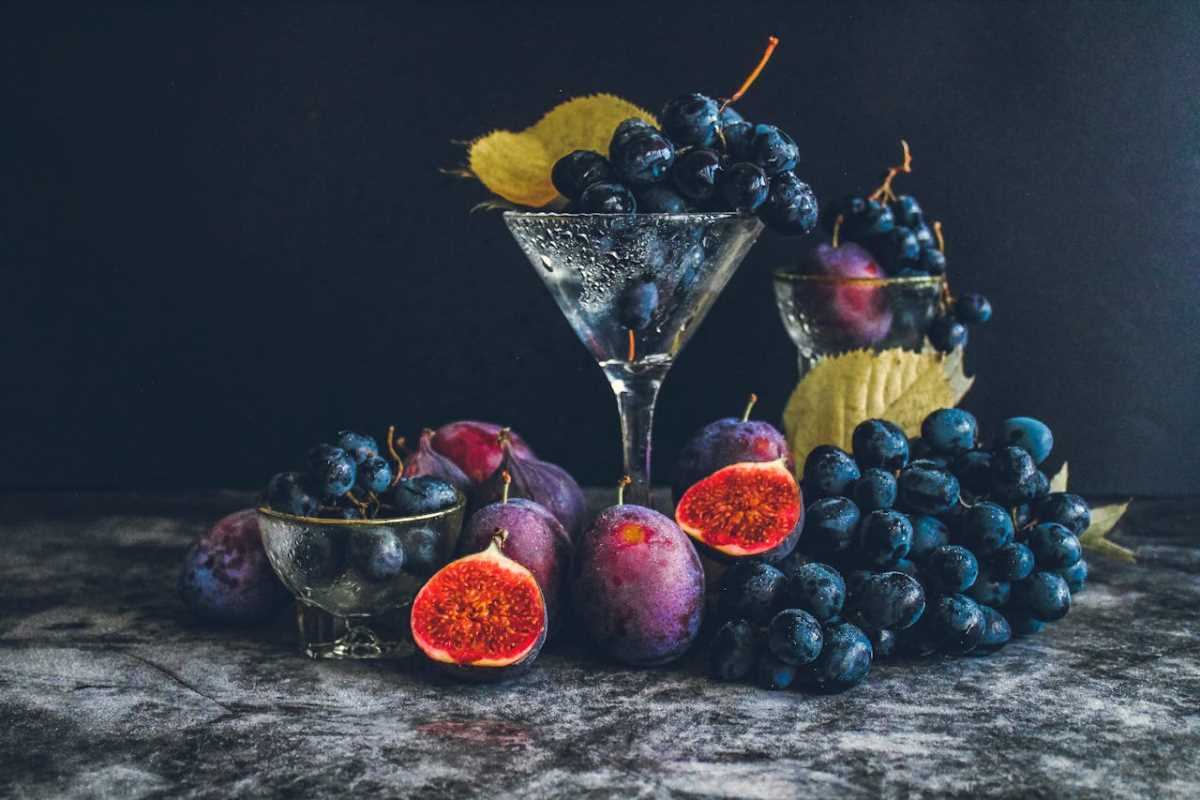We often hear about the importance of eating a colorful diet, filling our plates with greens, reds, and oranges. But what about purple? This vibrant, regal hue is more than just pretty to look at; it signals the presence of powerful nutrients that offer a wealth of health benefits. Purple foods get their stunning color from compounds called anthocyanins, which are potent antioxidants. Incorporating these foods into your diet can support everything from brain health to longevity. We’re here to give you a helpful guide to the incredible world of purple foods. Let's explore why you should be adding a splash of purple to your meals and which delicious options to choose from.
The Science Behind the Color: What Are Anthocyanins?
The beautiful deep red, blue, and purple pigments found in many fruits, vegetables, and grains are created by a group of flavonoids called anthocyanins. These compounds are a plant's natural defense system, protecting it from environmental stressors like sun damage and disease. When we consume these plants, we get to reap the protective benefits of these powerful antioxidants.
Antioxidants are substances that help protect our cells from damage caused by free radicals. Free radicals are unstable molecules that can result from normal metabolic processes, as well as exposure to pollution and other environmental toxins. Over time, this damage, known as oxidative stress, can contribute to aging and a range of chronic health conditions. Anthocyanins are particularly effective at neutralizing free radicals, making them a fantastic ally in maintaining your overall health.
Key Health Benefits of Purple Foods
Adding more purple to your plate is a simple and delicious way to support your body's long-term wellness. These foods are packed with benefits that go far beyond basic nutrition.
Boosting Brain Health and Cognitive Function
One of the most exciting areas of research on anthocyanins is their impact on the brain. These compounds have been shown to cross the blood-brain barrier, allowing them to exert their protective effects directly on brain cells. They help improve blood flow to the brain, which delivers more oxygen and nutrients to keep it functioning at its best.
Studies suggest that regular consumption of anthocyanin-rich foods can help improve memory, enhance learning, and slow down age-related cognitive decline. By reducing inflammation and oxidative stress in the brain, these powerful nutrients help support your mental clarity and sharpness for years to come. Think of it as providing your brain with the essential tools it needs to stay healthy.
Supporting a Healthy Heart
A heart-healthy diet is rich in colorful fruits and vegetables, and purple foods are a stellar addition. Anthocyanins contribute to cardiovascular health in several important ways. They have been shown to help lower blood pressure, reduce "bad" LDL cholesterol levels, and prevent the oxidation of cholesterol, a key step in the development of plaque in the arteries.
Furthermore, these compounds help improve the flexibility of blood vessels, promoting healthy circulation throughout the body. Incorporating foods like berries, purple cabbage, and purple potatoes can be a simple and effective strategy for supporting a strong and healthy heart.
Reducing Inflammation
Chronic inflammation is at the root of many modern health issues, including heart disease, diabetes, and arthritis. While some inflammation is a normal part of the body's healing process, long-term, low-grade inflammation can be damaging. Anthocyanins have powerful anti-inflammatory properties that help calm this chronic inflammatory response.
By including a variety of purple foods in your diet, you can help your body manage inflammation naturally. This can lead to reduced joint pain, improved gut health, and a lower risk of developing chronic diseases. You’ve got the power to fight inflammation with every bite.
Protecting Against Certain Cancers
While no single food can prevent cancer, a diet rich in antioxidants is a cornerstone of cancer prevention. The anthocyanins in purple foods help protect DNA from damage caused by free radicals, which can be a trigger for cancerous cell growth.
Research has indicated that these compounds may help inhibit the growth of cancer cells and promote their self-destruction, a process known as apoptosis. Foods like purple cauliflower and blackberries are packed with these protective compounds, making them a smart addition to an anti-cancer lifestyle.
The Best Purple Foods to Add to Your Diet
Ready to start painting your plate purple? We’ve got you covered with a list of delicious and versatile options that are easy to find and incorporate into your everyday meals.
Fruits
- Blackberries: These berries are packed with fiber and vitamins C and K, in addition to being one of the richest sources of anthocyanins. Enjoy them in smoothies, on top of yogurt, or simply on their own.
- Blueberries: Another powerhouse, blueberries are famous for their brain-boosting benefits. They are fantastic in oatmeal, baked goods, or as a simple, healthy snack.
- Plums: Both the skin and flesh of plums contain these beneficial compounds. They are a great source of fiber and can be eaten fresh or used in jams and sauces.
- Concord Grapes: These dark purple grapes have a rich flavor and are loaded with heart-healthy antioxidants. Enjoy the whole fruit or 100% grape juice in moderation.
- Acai Berries: Often found in frozen puree form, acai is a tropical fruit celebrated for its incredibly high antioxidant content. It's the perfect base for a vibrant smoothie bowl.
- Elderberries: Known for their immune-boosting properties, elderberries are typically consumed as a syrup or supplement. They are a concentrated source of powerful anthocyanins.
Vegetables
- Purple Cabbage: This crunchy vegetable is an affordable and easy way to add purple to your diet. Use it in salads, slaws, or stir-fries. A fun tip: the color changes to pink when you add an acid like lemon juice or vinegar.
- Eggplant: The deep purple skin of eggplant is where you'll find most of its anthocyanins. It's a versatile vegetable that works well in grilling, roasting, and countless Mediterranean dishes.
- Purple Carrots: Before they were famously orange, many carrots were purple! They have a similar taste to their orange cousins but with the added antioxidant benefits. They are wonderful roasted or shredded into salads.
- Purple Sweet Potatoes: These beautiful potatoes have a denser texture and richer flavor than regular sweet potatoes. They are delicious baked, mashed, or roasted into fries.
- Purple Cauliflower: This stunning vegetable retains its color when cooked and provides a visual and nutritional boost to any dish. Try roasting it or steaming it as a colorful side.
Embracing a More Colorful Plate
Eating a variety of colorful foods is one of the best things you can do for your health, and the vibrant world of purple foods is too good to ignore. By consciously adding these anthocyanin-rich fruits and vegetables to your diet, you are providing your body with powerful antioxidants that support your brain, heart, and overall vitality. Start small by adding a handful of berries to your breakfast or swapping your regular potatoes for purple ones. Every colorful choice is a step toward a healthier, more vibrant you.
 (Image via
(Image via





